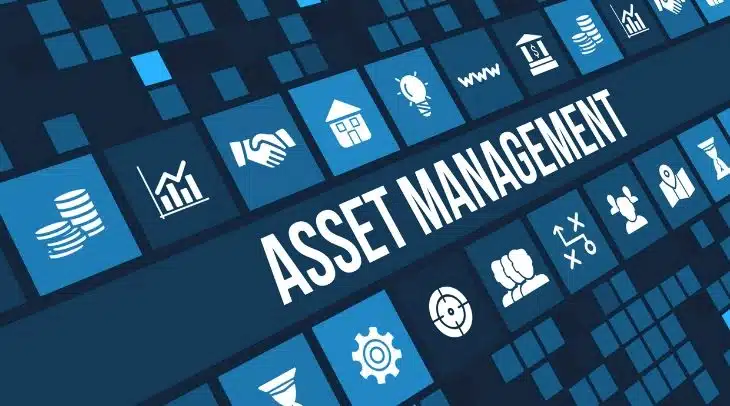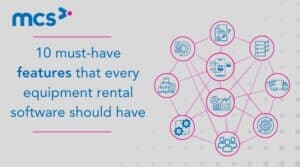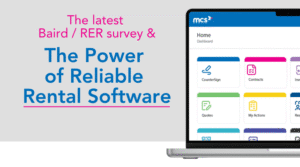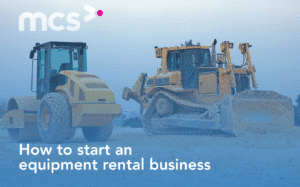Equpiment Asset Management: 10 Things You Need to Know
Equipment asset management is a critical component of any business that relies on machinery and tools to operate efficiently. Whether you’re in construction, manufacturing, or any industry where equipment plays a crucial role, managing your assets can significantly impact your productivity and profitability. In this article, we’ll explore what asset management for equipment entails, provide tips for successful management, and share insights from a real customer case study.

So, what is equipment asset management? It’s a systematic process of monitoring, maintaining, and maximizing the utility of your machinery and tools. This includes tracking equipment inventory, ensuring proper maintenance, optimizing asset utilization, and making data-driven decisions to extend the lifespan of your assets. By effectively managing your assets, you can minimize downtime, reduce costs, and enhance overall operational efficiency.
10 Things You Need to Know about Equipment Asset Management
- Inventory Management: A comprehensive asset management system starts with maintaining an accurate inventory of all your equipment. This includes details such as asset type, location, condition, and usage history.
- Maintenance Scheduling: Regular maintenance is essential to prevent breakdowns and costly repairs. With equipment asset management software, you can schedule and track maintenance tasks efficiently.
- Asset Utilization: Monitor the utilization of your equipment to ensure you’re making the most of your assets. Identify underutilized items and consider reallocating or selling them.
- Cost Control: Equipment asset management helps you control costs by identifying equipment-related expenses, such as maintenance, fuel, and repairs. This data enables you to make informed decisions.
- Asset Lifecycle Management: Track your assets’ usage and maintenance to extend their lifespan. This allows you to maximize ROI by making informed replacement or upgrade decisions.
- Streamlined Operations: Efficient asset management can streamline your daily operations, reducing downtime and improving productivity.
- Data-Driven Decisions: Asset management software provides valuable data insights, allowing you to make informed decisions regarding your equipment and resource allocation.
- Compliance and Documentation: Ensure compliance with industry regulations and maintain accurate documentation for audits and reporting.
- Real-Time Visibility: Rental equipment management software offers real-time visibility into your equipment, allowing you to respond quickly to issues and optimize operations.
- To get a better understanding of the benefits of asset management for equipment, let’s take a look at the case study of Hoogwerkservice:
Hoogwerkservice is an independent supplier of aerial platforms, cranes, and lifting equipment for both rental and sale. Since implementing MCS-rm, Hoogwerkservice has seen significant improvements in its operations. Here are some of the benefits they have experienced:
Inventory Management: Hoogwerkservice can now control and monitor its entire inventory of rental assets as well as machine sales.
Customer Insights: With a consolidated view of all customer interactions, order history, and financial data in MCS-rm, Hoogwerkservice can better understand its customers’ needs.
Warehouse Picking Process: Hoogwerkservice will see improvements in the accuracy of its warehouse picking process by using mobile devices and electronic pick lists.
Asset Lifecycle Management: Hoogwerkservice can monitor and track the history of any machine throughout its lifecycle and be able to understand the return on investment.
By implementing an effective equipment asset management software, Hoogwerkservice has been able to streamline its operations, improve customer satisfaction, and maximize its return on investment.
Watch the video to learn more on Hoogwerkservice’s success with MCS.
Tips for Successful Equipment Asset Management:
- Effective asset management is not just about implementing software; it’s about adopting best practices. Here are some tips to help you manage your equipment more efficiently:
- Conduct regular equipment audits to ensure inventory accuracy.
- Establish a proactive maintenance schedule to prevent breakdowns.
- Utilize asset management software to track usage and performance.
- Implement asset tracking systems for real-time visibility.
- Train your staff on the importance of proper asset management practices.
Equipment asset management is a critical aspect of running a successful and efficient operation. By adopting the right tools and practices, you can minimize downtime, control costs, and extend the lifespan of your assets. The insights from the Hoogwerkservice case study provide a real-world example of how effective asset management can transform your business. To explore equipment asset management software options, you can visit MCS Rental Software.
You might also like…
Ready to elevate your rental business?
Connect with our expert team to discover how MCS Rental Software can drive your success. We’re here to answer your questions and help you find the perfect solution.



